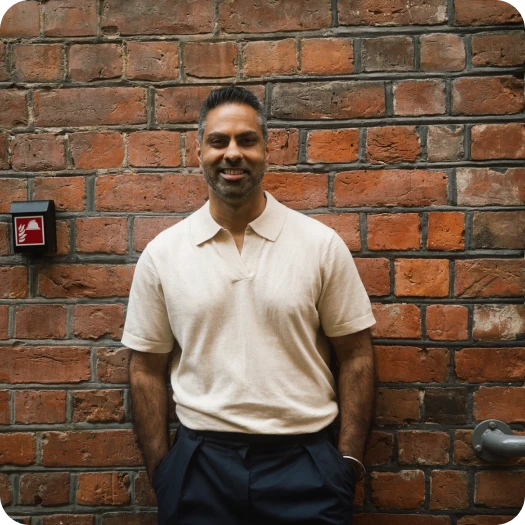How Many Savings Accounts Do I Need?


One savings account is enough for most people, two to three work well if each has a clear purpose, and anything beyond that usually just makes your life unnecessarily complicated.
How Many Savings Accounts Do You Actually Need?
Technically, there’s no limit to how many savings accounts you can open. Most banks will happily let you have multiple accounts, even across different institutions, and it won’t affect your credit score; in fact, they often welcome it, since more accounts can mean more fees for them.
The real question isn’t how many you can have, but whether your accounts are truly helping you reach your goals and manage your money more effectively.
One account works for 80% of people
For most people, simplicity wins. If you’re just starting out or have straightforward goals, one savings account is all you need.
Keeping everything in one place makes it easier to automate, track progress, and stay consistent. You have a clear view of your savings, and you avoid the overwhelm that can potentially derail your saving habits.
Two to three accounts can work if each serves a clear, specific purpose
For example, you might have one account for your emergency fund, one for short-term goals, and one for long-term goals—each with its target amount and timeline. However, this setup only works if you’re disciplined enough to fund them regularly.
You should keep in mind that the more accounts you open, the harder they are to manage. Split your money too thin and you risk triggering fees, missing minimum balances, or simply losing track of your finances.
More than three accounts becomes a management nightmare
If you’re managing more than three savings accounts, chaos is almost guaranteed. You’ll spend hours each month juggling balances, risking unnecessary fees, and losing track of where your money actually is. I’ve seen people with six or more accounts who couldn’t tell me their total savings without logging into multiple apps.
On top of all that, the mental load of keeping track of everything can drain your focus and lead to sloppy decisions. Instead of feeling in control, you may be buried in noise—and that can lead to the avoidance of money management altogether because it’s just too overwhelming.
The Hidden Dangers of Having Too Many Accounts
Some people have a mindset that having more accounts means better financial management, but I disagree. Here’s why:
1. Monthly fees will eat your savings alive faster than inflation
What feels like a small monthly fee at first can quietly snowball into hundreds of dollars a year if you’re not careful.
Many banks charge between $5 and $15 per month, with minimum balance requirements ranging from $300 to $2,500. When you’re juggling too many accounts, even one small dip below the threshold can trigger fees that undo months of savings progress.
2. Dormant accounts become forgotten money traps
If you leave accounts inactive, you run the risk of having them frozen.
It’s common for banks to freeze accounts or hand them over to the state after 12 to 24 months of no activity. Getting your money back often means dealing with endless paperwork, long phone calls, and frustrating delays, not to mention the stress of going through the whole ordeal.
3. Time is wasted on managing accounts instead of earning money
Managing too many savings accounts can become very cumbersome. Logging into multiple apps, juggling transfers, and keeping up with rate changes takes up a significant amount of time and energy.
All that micromanagement takes away from the time you could be spending on earning more or enjoying the life that you built for yourself.
4. Rate-chasing is a fool's game
Some people open multiple savings accounts just to chase slightly higher interest rates, spending hours comparing banks, all for tiny rate bumps that barely move the needle.
One account goes from 2.25 to 2.75%, and suddenly you’re logging in, transferring money, and convincing yourself you’re making smart money moves. Half the time, these are teaser rates that will drop after a few months. Even if they stick, the extra gain is often just a few dollars and not worth the extra effort.
Instead, you’re better off sticking with one solid bank, focusing on building consistent savings habits, and avoiding the constant shuffle of managing different accounts.
What I Actually Recommend (and Use Myself)
The best setup should be simple: one checking account for spending, one savings account for everything else. This keeps your money organized and makes it easier to protect your savings from unnecessary spending.
For checking accounts: Charles Schwab
I like Charles Schwab because it has zero fees, unlimited ATM reimbursements worldwide, and consistently smooth customer service.
The app runs without glitches, and while it requires a brokerage account, you can leave it untouched. It’s reliable, hassle-free, and saves you money without the usual banking headaches.
For more details on the best checking accounts, feel free to check out my guide.
For savings accounts: Ally Bank
I recommend Ally Bank for its competitive APY of around 3.75 to 4.00%, with no minimum balance and no monthly fees.
If you’ve ever found it messy to track multiple savings goals in one account, Ally’s saving buckets feature solves that. You can divide your money into categories—like emergency fund, travel, car, or any other goal—all within a single account.
You’ll still earn the same interest on the total balance, while seeing clear progress for each goal. It’s organized, flexible, and helps you stay consistent with your savings.
Check out my in-depth guide on the best savings accounts to learn more.
Best Practices for Managing Multiple Savings Accounts Without Losing Track
Opening more than one savings account can be a smart move—if you’re organized. But without a clear system, it can quickly turn into a mess of forgotten logins, missed transfers, and accounts sitting idle.
Here’s how to keep it simple and effective:
Use a budgeting app or dashboard
Managing multiple accounts gets a lot easier when you can see them all in one place. Tools like YNAB (You Need A Budget) or Personal Capital are great options, both allow you to track your savings progress, monitor balances, and avoid surprises—all without logging into three different banking apps every week.
Give your accounts nicknames
This one’s easy but powerful. Rename your accounts so they’re crystal clear on the function they serve:
- “Emergency Fund – DO NOT TOUCH”
- “Europe Trip”
- “New Car Fund”
When you give your money a name, you give it a job—and that makes it way harder to spend it impulsively.
Automate transfers
Pick your savings goals, then set up automatic transfers that align with each one. You don’t need to overthink the amounts because what matters is consistency. For example, you might send:
- $300/month to your emergency fund
- $100/month to your vacation fund
- $50/month to your car savings
You’ll be surprised how quickly it adds up without you lifting a finger.
Stick to one bank, if you can
The fewer apps and institutions you need to deal with, the easier your life becomes. Many online banks let you open multiple savings accounts under one login—or even better, they offer a smarter alternative (see below).
Don’t let accounts sit dormant
Banks can freeze or deactivate accounts that haven’t had any activity for 12 to 24 months. And getting your money back is not fun—it often involves paperwork, delays, and phone calls. To keep everything active, just set a small automatic deposit every month. Even $1 will do the job.
Bottom line: the more accounts you have, the more important it is to keep your system tight. A little structure goes a long way in making sure your savings goals don’t get lost in the shuffle.
Savings Buckets: A Cleaner Way to Save for Multiple Goals
If you’re trying to juggle a bunch of savings goals—like an emergency fund, a trip, a car, or even a future home—but don’t want to open five separate accounts, savings buckets are your answer.
Buckets are basically subdivisions inside one savings account. They let you organize your money by goal, without needing multiple logins, transfers, or banks.
Let’s say you’ve got three things you want to save up for:
- An emergency fund
- A trip to Japan
- A new laptop
With a savings bucket system, you keep all your money in one high-yield savings account, but mentally and visually separate it into three buckets. You decide how much goes into each. You can name them, set targets, and track your progress individually.
It’s all in one place. You earn the same interest across the full balance without the extra fees or hassle of managing multiple logins
Living Your Rich Life
The fact that you’re even asking about savings accounts is a good sign—it means you’re thinking ahead. That alone puts you ahead of most people and is a real step toward building your Rich Life.
If you want to go deeper on smart saving, you might enjoy these practical guides:
You don’t need a complicated setup to make progress. One checking account for spending and bills and one savings account for your emergency fund and goals is more than enough. If you want to keep those goals organized, use buckets within your savings account to track each one.
In the long run, simple systems always win. They’re what help you stay consistent and actually grow your money over time.